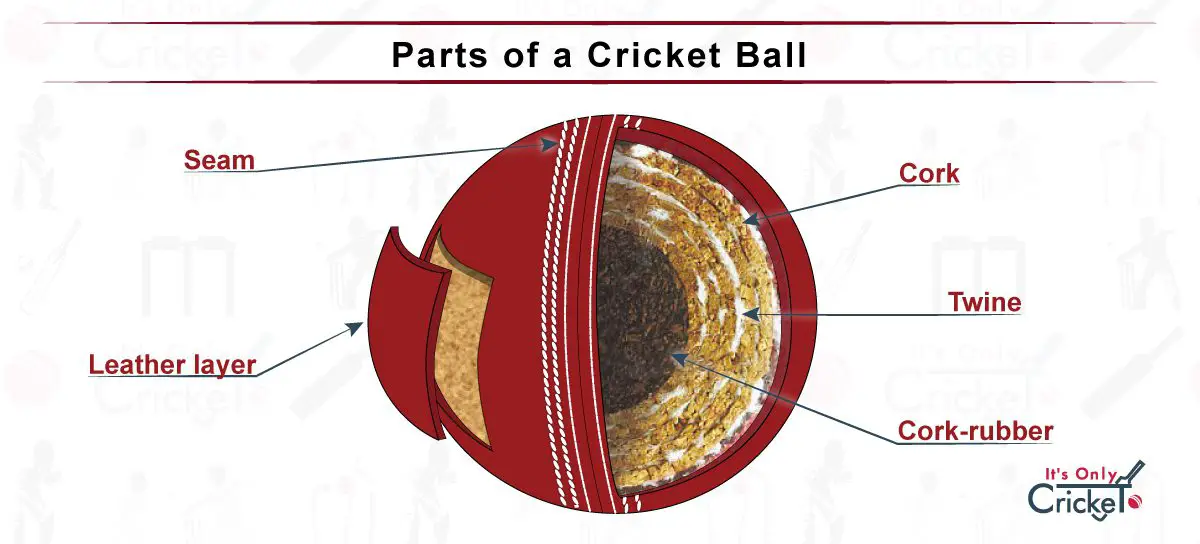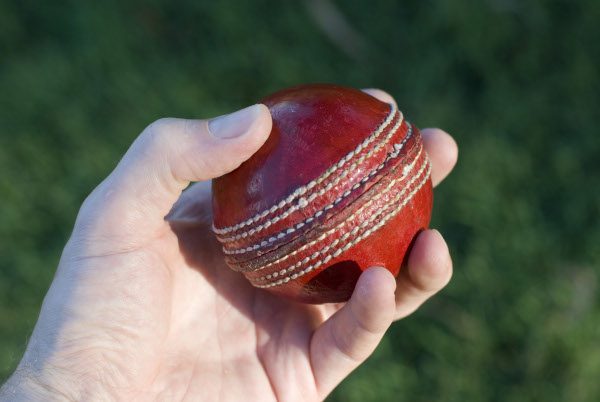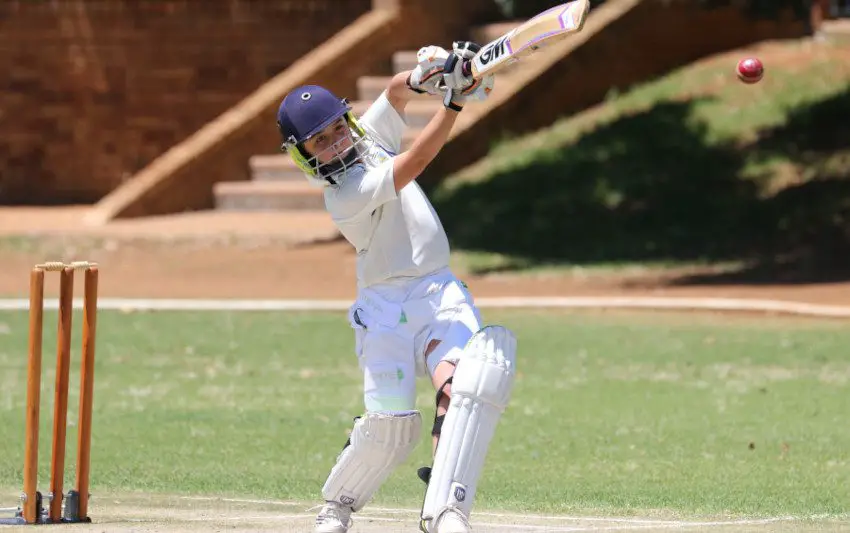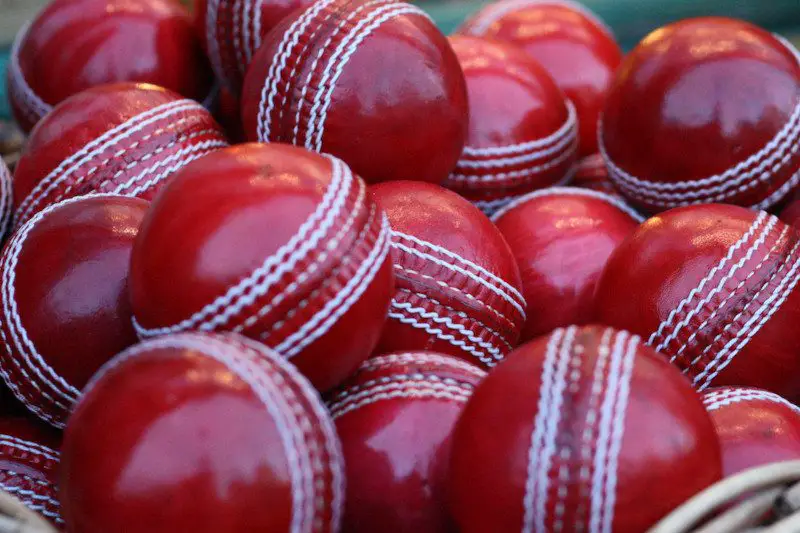Table of Contents
We take a cricket ball for granted but we simply couldn’t play a match without it so I think it’s worth taking a few minutes to find out how a ball is made.
The Manufacturing Process of Cricket Balls
Cricket balls are rarely hand made, certainly as far as the professional game is concerned. The days of tradesmen shaping the leather and stitching the seam with calloused hands are long gone.
With the majority of manufacturers, machines take care of the process from start to finish although some hand made elements may remain.
- In the early stages, a small, central sphere of cork is taken.
- Some string is wound tightly around it until the ball gets to a certain width.
- The leather exterior is now put in place before the ball is stitched.
- This is where the procedure will differ slightly. Some producers will use a machine to take care of the stitching while others will continue to finish off the ball by hand.
- The ball will then be polished until a high sheen is achieved.
- The manufacturer’s branding is then stamped on the surface and the ball is finally finished.
It’s a fast and easy process when taken care of by that machinery but keep reading for a closer look at the various stages and those component parts.
What is a Cricket Ball Made of?

1. Cork Centre
A hard sphere of cork is used at the very centre of the cricket ball. It’s a tough and durable material which is reinforced with rubber for extra hardness.
If we look at the Dukes manufacturer which is responsible for balls used in professional cricket in the UK and other parts of the world, we find that the cork is machine made and the rubber is imported from Malaysia.
It may be the smallest part of the final product but that inner core is vitally important. This is the central foundation upon which the rest of the ball is made so great care must be taken to get things right.
2. Yarn
Tightly wound yarn or string is used in the next stage of the manufacturing process.
There doesn’t appear to be any special requirements for this material but it is important that the yarn is wound very tightly around the central cork sphere.
The tightness of the second piece of the equipment is instrumental in terms of weight and hardness of the ball itself.
3. Leather Exterior
There is a famous saying in cricket about the sound of ‘leather on willow’ and that’s the clue to the next part of the ball. A leather exterior surrounds the cork and string and it provides the surface of the ball itself.
In the majority of cases, cow leather is used in this stage of the manufacturing process. That’s the standard for professional balls around the world although there are isolated cases where ox leather and even buffalo leather are used.
Dukes balls offer an interesting insight into this part of the production process: They only obtain leather from one specific tannery in Scotland as they believe this is the best supplier of the highest quality leather.
Four segments of leather are used on the surface.
For red balls, these should be of four equal quarters and, for consistency in the quality, they should all come from the same stretch of leather. In white balls, it’s possible to use two pieces of leather and that’s partly why they don’t have the same levels of durability.
The thickness is also important here: With the Dukes ball, the leather can be between 4mm and 4.5mm thick. With other balls, particularly those made and used in the subcontinent, the surface could be between 2mm and 3mm.
That’s a big difference and one that can affect how the ball performs and how long it lasts for.
4. Seam
The final part of the process sees the leather surface put firmly into place via the stitching process. The seam stitches the leather in as it goes around the circumference of the ball.
I mentioned that machines do most of the work in this process but there is an element of hand stitching still in the game. With the Dukes ball, there are six individual rows around the circumference of the ball and all are hand stitched. It’s a very painstaking process but one that ensures a high quality product in the end.
At the very end of this process, the leather is polished to a high standard.
At Dukes, a synthetic grease is used which treats the ball, and prevents the leather from picking up any moisture. A lot of this grease is used and that’s why the Dukes ball tends to be darker and shinier than any of its competing brands.
Throughout this round up I’ve used Dukes for the examples and that’s because they are widely respected and acknowledged as the best producer. Other manufacturers, such as Kookaburra, might do things slightly differently but the overall process will be very similar.
And that’s it: The ball is finally ready to be used in a match situation.

Different Types of Cricket Balls
The traditional red ball has been used in most forms of cricket for centuries. The first change to the rule came along when white cricket balls were introduced for day/night games. In the present day, pink balls have come along to join the family of professional cricket balls.


